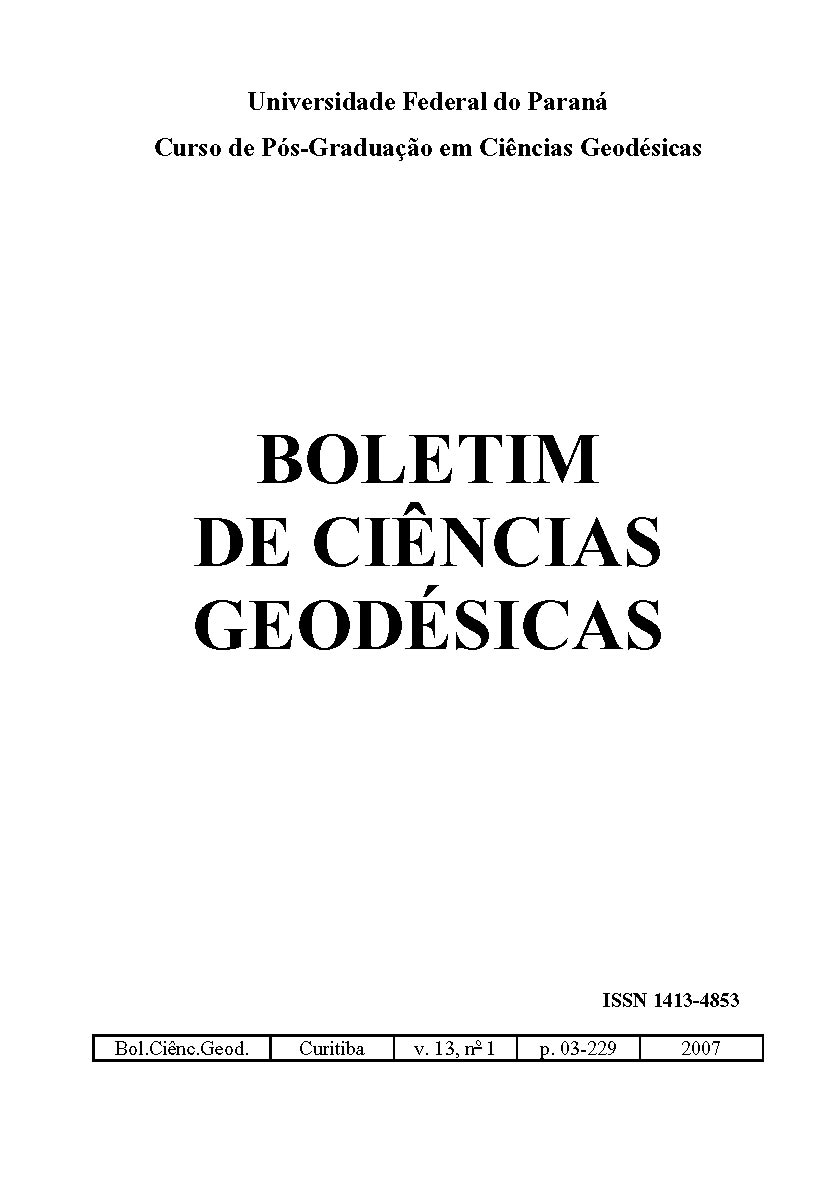DEFINIÇÃO DE UNIDADES GEOMORFOLÓGICAS A PARTIR DE NAVEGAÇÃO E VALIDAÇÃO DE CAMPO UTILIZANDO GPS E SISTEMAS DE INFORMAÇÕES GEOGRÁFICAS: O CASO DA SUB-BACIA DO RIO CASTELO-(ES)
DOI:
https://doi.org/10.5380/bcg.v13i1.8244Palavras-chave:
Unidades geomorfológicas, GPS, SIG, Geomophological unitsResumo
O presente trabalho descreve o uso de sistemas de posicionamento global (GPS)
aliado a sistemas de informações geográficas (SIG) como auxílio na definição de
unidades geomorfológicas na Sub-bacia Hidrográfica do Rio Castelo (SBHRC). A
SBHRC se localiza ao sul do Estado do Espírito Santo, Brasil, possuindo uma área
aproximada de 1500 km², abrangendo seis municípios. Dada a extensão da área e a
escala de trabalho de 1:75.000, seu levantamento poderia tornar-se dispendioso e
até inviável se não houvesse uma perfeita sincronização entre o posicionamento em
campo e os dados cadastrados na base cartográfica. A definição primária de
unidades geomorfológicas faz parte da etapa de caracterização fisiográfica da
referida área, objeto de estudos de zoneamento e diagnóstico geoambiental.
Ferramentas de geoprocessamento e processamento de imagens LANDSAT TM5 e
de Radar SRTM associadas a equipamentos GPS para validação de campo foram
empregadas na compartimentação geomorfológica da SBHRC. A utilização
conjunta de GPS, imagens orbitais e SIG permitiu elaborar um produto de análise ambiental pormenorizado, em escala apropriada, validado pelas avaliações in loco e
com grande potencial para a avaliação sistemática de recursos naturais.



